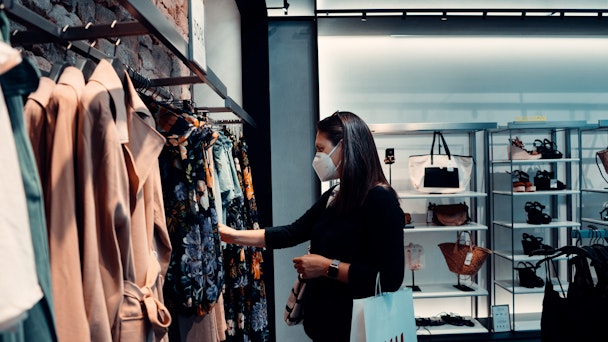Get the most effective advertising with drive-to-store
It’s undeniable that 2020 was a year like no other. For retailers and consumers alike, it was marked by lockdowns, closed shops, and severe restrictions to go just about anywhere. But if you think about it, 2020 wasn’t just negatives. The pandemic gave brands a major push to innovate, and brick-and-mortar adapted and combined physical locations and the ever-growing digital distribution to reach consumers.

As a retailer, it’s vital that you get advertising that delivers against your goals and increases the number of customers visiting your stores, dealerships or restaurants. Drive-to-store might just be the perfect way for you to engage with consumers longing to go back to normal.
Create and activate
Drive-to-store campaigns are different from standard advertising activations. As retailers are expecting a physical action instead of an online response, the campaign set-up needs to be different. So, before even launching your campaign, there are a few things you should think about.
First in the list is targeting. In drive-to-store, campaigns are usually delivered to users within a specific physical location. Depending on your needs, it will be up to you to decide between the many targeting options available for the most effective advertising. Those range from travel-time to store, to radius targeting, or precise competitor targeting and many more. If your audience is more niche, audience targeting would be the better choice as you’ll be engaging with the person behind the device, rather than their location only.
Second is using multi-channel advertising. By reaching consumers with a consistent message across multiple media channels, you can target them throughout the day to convince them to visit your location. This multi-layered strategy has yielded proven results, with audio increasing footfall uplift by 65% and OOH increasing it by 2.5x compared to using those channels separately.
Last but not least are your creatives. Once you’ve decided on your targeting strategy and channels, you have to develop impactful creatives that will catch the eye of your audience. You can either use a single format or a wider range of formats to advertise on different sites and be more engaging for your audience. Whatever you do, make sure that your CTA is crystal clear so consumers can visit your store. You could even go one step further and use dynamic creative optimization to show users their nearest store and deliver a map with directions to it. Most of all, remember to remain consistent across your formats and channels to deliver a bigger impact.
Optimise and learn
Once your campaign is running, it’s time to optimize it. This might seem like a no-brainer, but if the purpose of your campaign is to drive store visits, you need to be able to measure them. Doing so in-flight is key to successful advertising. Measuring your campaign performance at the end only is too little too late – especially if you haven’t been driving visits. To effectively evaluate your advertising efforts, you should turn to a trusted independent third-party so you can compare like-for-like and make sure your ads are delivering results from the get-go.
Another thing you should keep in mind is that you’re asking consumers to commit to a physical real-world action, which can take more time than simply visiting a webpage. Case in point, between 5.1%-14.6% of total visits can occur up to 30 days after the end of a campaign. These same consumers are swamped by dozens of advertising messages every day, and it can take a few tries for a message to stick. Retargeting is a great tactic to keep your campaign top of mind and push consumers to your store. You can do so by sending them a new message or an incentive to revisit, or by reaching out to them when they are within your travel time radius or near an OOH/DOOH location.
Once your campaign is over, it’s time to sit back and look at what worked, what didn’t and what can be improved. This could be the time it took to generate a store visit, the final cost per visit, which audiences were more likely to convert to a visit and which were the least likely, etc. Doing so will give you valuable insights into how to plan future campaigns and what to expect from your consumers.
2020 witnessed the closure of major retailers and brands that have been with consumers for decades. But rather than being the sole culprit, the pandemic only sped up the inevitable. Businesses, big and small, with a physical location, had to figure out how to get ahead and run advertising that could successfully drive customers into their stores, dealerships and restaurants. With drive-to-store, brands were able to adapt quickly and optimize their campaigns to reach the right consumers at the most appropriate time and continue to engage with them in one of history’s most difficult periods.
Learn more about the most effective way to get your customers into stores: download S4M’s Drive-to-Store Handbook here.
Content by The Drum Network member:

S4M
S4M – The drive-to-store platform.
S4M’s aim is to help brands succeed, we want to see busy stores, popular restaurants and thriving car dealerships....

